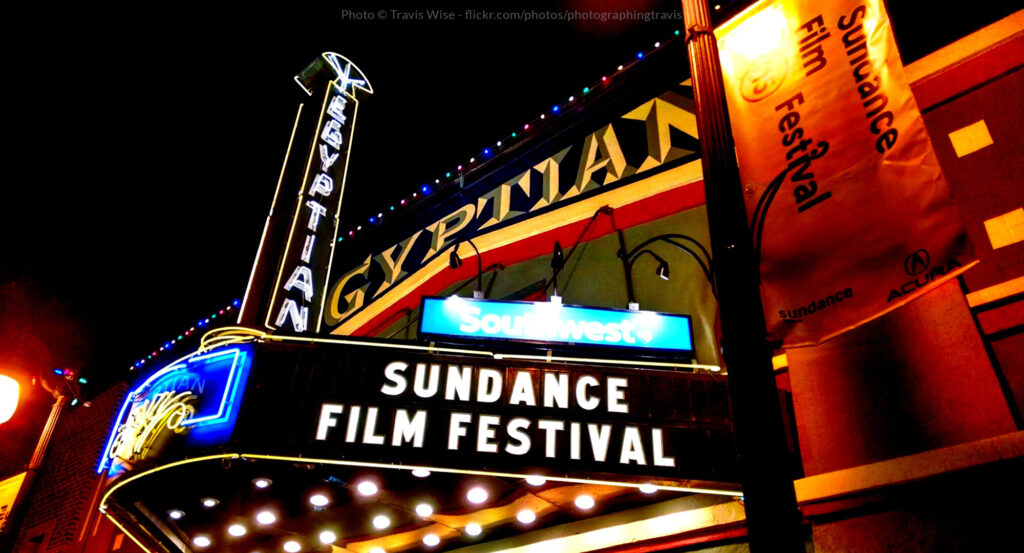Start with collaboration
A common question among aspiring media composers is, how do I find projects? Here’s the problem: especially in the early stages of a career, you don’t find projects, you find collaborators. Projects are the result. We depend on the work of others to be able to do our own, so we must build great relationships for the work to follow.
Some of this has to do with trust. The less established you are, the higher the threshold becomes for someone to entrust you with something they already invested a lot of time and money into. The people you want to work with have to have confidence that you can and will deliver, and that you will be a reliable and responsive collaborator. Such a level of trust is usually not built through a cold email with a demo reel, but through long-term personal interactions—a relationship.
Now, once you have credits, those credits can indeed serve as opportunities to solicit specific projects through cold outreach directly. However, even for established composers, a large portion of their work continues to come through their personal relationships.
So how do you start, build, and maintain such relationships?
Search out connections
Meeting and talking in real life remains the most successful method to meet new, potential collaborators. Now, in our social media age, some relationships actually start online, and may even be shepherded to considerable depth without personal meetings. But even though cold outreach can occasionally lead to projects, that doesn’t make it a promising core strategy.
Festivals, conferences, screenings, and similar events are one of the best ways to personally connect with other creatives in visual media. There are thousands of film festivals, dozens of video game conferences, and several industry organizations putting on a plethora of events. Attend as many as you can, and join all leading professional organizations in your field of interest. Contributing as a volunteer can maximize networking opportunities even more.
Writing about all the dos and don’ts of networking would go way beyond the scope of this article. Thankfully, there are many great books available. The most succinct summary I’ve read is Derek Sivers’ article “How to attend a conference.” Despite the title, this article applies to all networking opportunities. Read it and take it to heart. The main takeaway: don’t make it about you, make it about the people you meet.
[We realize making connections during COVID-19 is more difficult—luckily many conferences are moving to a virtual format so be sure to take advantage of as many as you can!]
DON’T MAKE IT ABOUT YOU, MAKE IT ABOUT THE PEOPLE YOU MEET.
Find your authenticity
One thing that is essential for any relationship to be successful is authenticity. You can fake a lot of things for a short time, but since the goal is to start a long-term creative relationship, anything but your authentic self will sooner or later unravel. So don’t pretend to like horror films just because the horror film festival happens to be in town and—heaven knows—you need the work. Relationships built on a ruse generally will not turn into actual gigs, and certainly not into long-term ongoing collaborations.
The need for authenticity makes planning your networking activities relatively easy. Just follow your heart in regards to the type of projects and collaborators you want to connect with, then use your head to develop strategies on when and where to encounter those like-minded people.
On the flip side, the need for authenticity does require a good amount of self-knowledge. Potential creative collaborators cannot resonate with you as an artist if you don’t know who “you” as an artist actually are. So continually working on one’s self-knowledge is essential.
Nurture relationships
After you have made a first connection (and followed up shortly after that, as Derek Sivers counsels), it is important to continue to stay in touch.
Once again, the trick is to make it mostly about them, and less about you. This is not a networking strategy; it’s a way of life. Always keep everyone you know somewhere in the back of your head. When something crosses your path that may be of interest to one of them—a film release, new technology, a business opportunity, anything—send a quick message their way: “Saw this and thought of you – maybe useful for your new screenplay? Hope all is well!”
Make it your mission to be a contributor of value to everyone in your circle. Even more importantly: do so without expectation of any reciprocation. This paradox is at the heart of good relationships of any kind. To get something from the relationship, you have to honestly, genuinely, positively not expect anything in return from the other person. Give freely.
Stay in touch
Once a connection is made, it’s a good idea to send occasional updates with what you’ve been up to. I make it a point to email my network a quick note whenever a major project of mine is released. It can be just two or three sentences to highlight the project’s uniqueness and pique their interest. Sending updates once a year is fine, but certainly no more than twice per year.
My update emails always include a link to one single cue. I don’t send a whole playlist since they can find that on my website if they so desire. Alternatively, you can include a link to a short video (never send an attachment!). I never send any single piece of media longer than 2-3 minutes, and ReelCrafter is perfect for sharing a link to a reel with an embedded video.
By the way, I learned years ago from agent Richard Kraft that the best time for any non-urgent outreach is Tuesdays, Wednesdays or Thursdays, around 4-6pm in the recipient’s local time zone. During the day everyone is too busy, Mondays everyone is still catching up with their week, and Fridays everyone is trying to wrap things up for the weekend. I can’t prove this, but following this rule has served me well.
Meet IRL [or on Zoom]
Now, while emails and social media are important, nothing replaces a regular face-to-face sitdown with the people in your network. So when the chance presents itself, ideally about once a year, I try and schedule a meeting with the most important people in my network. I set up a coffee with folks I have newer relationships with, a lunch for more advanced relationships, and a dinner for my closest creative partners. Why the hierarchy? Because meeting in person represents quite a time investment on the part of my contacts, and they will not make that investment until it is earned.
It’s perfectly fine during these face-to-face sitdowns to talk relatively little about actual projects, and I certainly minimize pitching myself. These meetings are intended to deepen the relationship, so we often talk about things like family news, recent film releases, art exhibits, nature hikes, food, wine, etc. I do always ask what the other person has been working on, but I never push my own news unless asked. I find that business is best brought up later, in a follow-up email, or briefly at the end (“send me that script!”).
MEETING IN PERSON REPRESENTS QUITE A TIME INVESTMENT ON PART OF MY CONTACTS, AND THEY WILL NOT MAKE THAT INVESTMENT UNTIL IT IS EARNED.
Maintain
Using the proper tools definitely helps in all of this. I find it essential to have a contact database with customizable fields for specific information, with a reminder mechanism to schedule follow-ups, and with space for making notes about conversations and next steps.
One final observation: developing creative relationships takes years. Much like earning interest on savings account deposits, building a career is a life-long endeavor that requires regular input, patience, and endurance. Be in it for the long haul.




